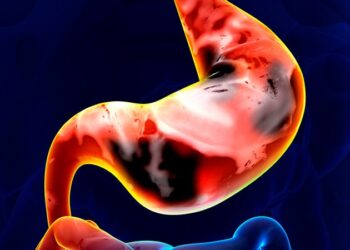TOPLINE:
Integration of pre- and postablation B-type natriuretic peptide (BNP) levels in patients with persistent atrial fibrillation (AF) facilitated risk stratification for major adverse cardiovascular events (MACE) and arrhythmic recurrence. Those with elevated preablation BNP levels and poor postablation reduction in BNP levels had an increased incidence of both events.
METHODOLOGY:
- Researchers analyzed data on 392 patients who underwent their first catheter ablation for persistent AF between 2010 and 2023 to investigate the impact of integrating pre- and postablation BNP levels on clinical outcomes.
- Preablation plasma BNP levels were measured within 3 days prior to the ablation, and postablation plasma BNP levels were measured 3 months after the procedure.
- On the basis of a median preablation plasma BNP level of 148 pg/mL and the relative postablation change (-52.6%), patients were classified into four subgroups: low-low, low-high, high-low, and high-high. ” High ” indicated values equal to or greater than the respective medians, and ” low ” indicated values lower than the respective medians.
- The primary endpoint was the incidence of MACE (a composite of all-cause death, hospitalization for heart failure, and other cardiovascular hospitalizations) after the ablation procedure.
- Secondary endpoints included the assessment of cumulative rates of arrhythmic recurrence and the risk for MACE and arrhythmic recurrence across BNP subgroups.
TAKEAWAY:
- Over a median follow-up of 5.3 years, 16% of patients experienced at least one adverse event, with hospitalization for heart failure being the most common (63%).
- The cumulative incidence of MACE was highest in the high-high subgroup (26.3%; P < .001), with particularly elevated rates of all-cause death and hospitalization for heart failure (P < .001 for both).
- The cumulative incidence rates of arrhythmic recurrence were higher in the low-high and high-high subgroups compared with the other subgroups (P < .001).
- Both low-high and high-high subgroups showed substantially higher risks for arrhythmic recurrence compared with the low-low subgroup (adjusted hazard ratio, 4.57 and 7.17, respectively, P < .001 for both).
IN PRACTICE:
“We demonstrated that integrating pre-ablation and post-ablation BNP levels could be useful for stratifying the risk of both MACE and arrhythmic recurrence during long-term follow-up in patients with persistent AF,” the authors of the study wrote.
SOURCE:
This study was led by Hironori Ishiguchi, MD, PhD, of the Yamaguchi University Graduate School of Medicine in Ube, Japan. It was published online on February 26, 2025, in Open Heart.
LIMITATIONS:
Data were collected retrospectively from a cohort with a modest sample size at a single center, restricting the generalizability of this study. Postablation BNP levels could have been influenced by arrhythmic recurrence. The catheter ablation practices evolved substantially over the span of the study period.
DISCLOSURES:
This study did not receive a specific grant from any funding agency. The authors declared no competing interests.
This article was created using several editorial tools, including AI, as part of the process. Human editors reviewed this content before publication.
Source link : https://www.medscape.com/viewarticle/elevated-bnp-pre-and-post-ablation-af-signals-future-risks-2025a10005xm?src=rss
Author :
Publish date : 2025-03-11 13:35:00
Copyright for syndicated content belongs to the linked Source.














